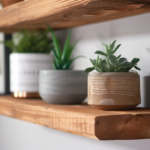Installing a doorbell is a straightforward process that can enhance the functionality and security of your home. This article provides a step-by-step guide on how to properly install a doorbell. From selecting the right doorbell to wiring and testing its functionality, this article offers professional advice and tips to ensure a successful installation. By following these instructions, you can easily add a doorbell to your home and enjoy the convenience it brings.
Gather the Necessary Tools and Materials
To successfully install a doorbell, it is crucial to carefully gather all the necessary tools and materials, such as a screwdriver, wires, a voltage tester, and the doorbell kit itself. Choosing the right materials is essential to ensure a smooth installation process. The screwdriver should be compatible with the screws provided in the doorbell kit, and the wires should be of the appropriate gauge for the electrical connections. Additionally, a voltage tester is necessary to ensure that the electrical circuit is properly grounded and that there is no risk of electric shock during the installation. By gathering these tools and materials, homeowners can avoid common doorbell troubleshooting issues such as faulty connections or inadequate power supply, leading to a successful doorbell installation.
Choose the Right Doorbell for Your Home
When selecting a doorbell for your home, it is important to consider your personal preferences and specific needs in order to ensure a seamless integration into your household. There are various doorbell types and features available in the market today, each catering to different requirements. One type of doorbell is the traditional wired doorbell, which requires professional installation and is connected to your home’s electrical system. Another option is the wireless doorbell, which is easy to install and eliminates the need for wiring. When it comes to features, doorbells can have multiple chime options, adjustable volume settings, and even video capabilities, allowing you to see who is at your door. Some doorbells also come with smartphone connectivity, enabling you to receive notifications and answer the door from anywhere. Consider these factors when choosing the right doorbell for your home to enhance convenience and security.
Determine the Ideal Location for Installation
When determining the ideal location for installation of a doorbell, there are several factors to consider. Firstly, whether it will be placed on a wall or a door depends on personal preference and convenience. Secondly, it is important to consider the sound levels to ensure that the doorbell can be heard clearly throughout the house. Lastly, accessibility for visitors should be taken into account, ensuring that the doorbell is easily visible and reachable.
Wall or Door
One important factor to consider when determining the ideal location for installing a doorbell is the number of walls or doors that need to be crossed for the sound to reach its intended destination. Proper doorbell placement is crucial for ensuring that the doorbell can be heard from various areas of the house or office. When installing a doorbell, it is important to consider the layout of the space and the distance between the door and the desired location for the doorbell chime. The doorbell installation process involves identifying the suitable location, drilling holes for the wiring, connecting the wires to the chime and transformer, and mounting the doorbell button. By considering the number of walls or doors that the sound needs to travel through, one can determine the best placement for the doorbell to ensure its effectiveness in reaching its intended destination.
Consider Sound Levels
Proper consideration of sound levels is crucial in determining the ideal location for installation of the doorbell, ensuring its audibility throughout the space. When installing a doorbell, it is important to evaluate the soundproofing options available to minimize any unwanted noise. This can be achieved by using sound-absorbing materials or soundproofing techniques to create a quieter environment. Additionally, homeowners may want to consider installing a volume control option for the doorbell. This allows users to adjust the sound level according to their preferences or the needs of the space. By incorporating volume control options, homeowners can ensure that the doorbell’s sound is not too loud or too soft, providing a pleasant and audible experience for anyone who uses it.
Accessibility for Visitors
The ideal location for installation of the doorbell can be determined by assessing the accessibility for visitors and ensuring its visibility throughout the space. When considering accessible doorbell options, it is important to take into account the needs of individuals who are visually impaired. For visually impaired individuals, a doorbell that incorporates both visual and auditory cues can be highly beneficial. This could include features such as a flashing light or a sound that is easily distinguishable from background noise. Additionally, the installation of the doorbell should be in a location that is easily accessible to all visitors, regardless of their mobility. This may mean placing the doorbell at a height that is reachable for individuals using wheelchairs or walkers. By considering the accessibility needs of all visitors, the doorbell can be installed in a way that ensures everyone can easily identify and use it.
Prepare the Doorbell Mounting Surface
To effectively install a doorbell, ensure a suitable mounting surface by cleaning and smoothing it for a secure and stable attachment. Doorbell installation requires careful consideration of doorbell placement to ensure maximum functionality and convenience for both residents and visitors. When choosing a mounting surface, it is important to select a location that is easily accessible and visible to visitors. The surface should be smooth and free from any debris or unevenness that could affect the installation process. Cleaning the surface thoroughly and using sandpaper to smooth out any imperfections will ensure a secure attachment for the doorbell. Additionally, it is essential to consider the height and angle of the doorbell placement to optimize its visibility and functionality. Proper preparation of the mounting surface is crucial for a successful doorbell installation.
Wire the Doorbell System
To wire the doorbell system, you will need to start by connecting the doorbell transformer to a power source. This involves identifying the transformer’s low-voltage terminals and connecting them to the appropriate wires. Next, you will need to connect the doorbell button to the transformer, ensuring that the wires are securely attached and properly insulated.
Wiring Doorbell Transformer
When wiring a doorbell transformer, it is important to ensure proper electrical connections for a seamless integration with the doorbell system. The doorbell transformer is responsible for converting the standard household voltage to a lower voltage that is suitable for the doorbell system. Incorrect wiring of the transformer can lead to various issues with the doorbell, such as no power, buzzing sounds, or inconsistent operation. To troubleshoot doorbell issues related to the transformer, start by checking the wiring connections. Ensure that the transformer is properly grounded and that the wires are securely connected. It is also important to check the voltage output of the transformer to ensure it matches the requirements of the doorbell system. By following proper wiring techniques and troubleshooting steps, you can ensure a properly functioning doorbell system.
Connecting Doorbell Button
The next step in installing the doorbell system is connecting the doorbell button to the wiring, ensuring a seamless integration within the overall system. This connection is crucial for the doorbell to function properly and allows for easy troubleshooting and maintenance in the future. When connecting the doorbell button, it is important to follow the manufacturer’s instructions and ensure that the wires are securely attached. This will prevent any loose connections that could lead to malfunctioning or intermittent operation. It is also recommended to periodically check the doorbell button for any signs of wear or damage and replace it if necessary. Regular doorbell maintenance will help to prolong the lifespan of the system and ensure its reliable performance.
Connect the Doorbell to Power
In order to ensure proper functionality, it is essential to connect the doorbell to power using appropriate wiring techniques. Connecting power to a doorbell is a crucial step in the installation process, as it allows the device to operate effectively. Troubleshooting issues may arise if the doorbell is not properly connected to power. One common problem is a doorbell that does not ring or only rings intermittently. This could be a result of a loose or faulty connection between the doorbell and the power source. To avoid such issues, it is recommended to follow the manufacturer’s instructions carefully and use the appropriate wiring techniques. This includes ensuring that the power source is compatible with the doorbell’s voltage requirements and using the correct wiring connections. By correctly connecting the doorbell to power, you can ensure its reliable functionality and avoid potential troubleshooting problems.
Test the Doorbell’s Functionality
To ensure the doorbell’s functionality, it is important to test its responsiveness and sound quality. This can be done using test equipment such as a multimeter or a voltage tester. Begin by pressing the doorbell button and checking if it produces a clear and audible sound. If not, troubleshooting tips can be applied. First, check the wiring connections to ensure they are secure and properly connected. If the wiring is fine, the issue may lie with the doorbell chime itself. In this case, try replacing the chime unit with a new one. Additionally, it is recommended to check the transformer voltage to ensure it is within the required range. By testing the doorbell’s functionality, homeowners can ensure that it will work properly and alert them when someone is at the door.
Secure and Finish the Doorbell Installation
After completing the necessary wiring and mounting the doorbell, homeowners should carefully secure and finish the installation by ensuring all screws are tightened and any exposed wires are neatly concealed. These finishing touches are crucial to ensuring the doorbell functions properly and looks aesthetically pleasing. Homeowners should double-check that all screws are tightened to prevent the doorbell from becoming loose or falling off. Additionally, any exposed wires should be neatly concealed to prevent any potential hazards or damage. It is advisable to use wire clips or channels to secure the wires along the wall or door frame. Troubleshooting tips include checking the doorbell’s connection to the power source, ensuring the batteries are properly inserted (if applicable), and testing the doorbell’s functionality by pressing the button and listening for the chime or observing any visual indicators.



